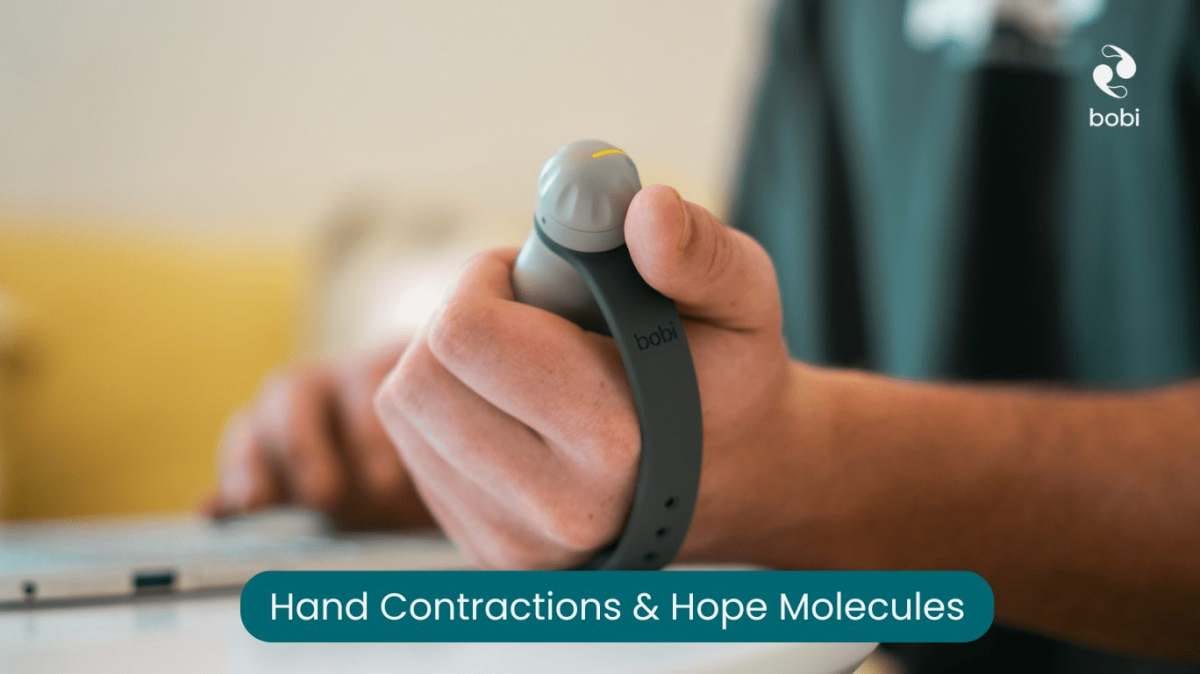
We all know that we can boost your physical health with exercise. But what if we said that a nice swim, a simple walk, or even just moving your muscles can enhance your mental health and mood too? Yes, this is true. This is because of chemicals released by muscles called “Hope Molecules”. According to a study conducted by UCLA, people who exercise confront a 40% decline in bad mental health days in a month in contrast to the ones who don’t.
Among various approaches to tackle issues like stress and depression, one compelling discovery leads us to the lighthouse “hope molecules” _ the proteins excreted during exercise. These special molecules come from our muscles when we move and are a key to better mental health. Stick with us till the end to learn the science behind hope molecules, and how they can be a ray of light in mental health.
Imagine a group of messengers in your body. They carry signals that change your mood, focus, and mental state. This group is from the fascinating world of hope molecules. These small proteins come from your muscles.
They are released into your bloodstream whenever you exercise, no matter the size of the effort. If you’ve ever come across an elevating feeling of achievement after a workout or sensed better after moving your muscles, you’re already aware of the impact of hope molecules.
At a cellular level, the molecules are small proteins that play a big role in our well-being. Hope molecules, scientifically known as “Myokines” are dominant mental stress-relievers and actively impact brain operations and structure.
They are released by muscle fibers during contractions. The chemicals foster overall well-being by reducing inflammation, boosting fat decay, balancing glucose levels, and protecting from a cognitive drop.
When you exercise, the muscles shrink and release these chemicals into the blood flow. These proteins act as chemical messengers and communicate with different organs, including the brain.
Natural Antidepressant
Hope molecules work like a natural antidepressant and consequently link physical movements with emotional well-being. It helps improve your comprehension of the power your body holds and paves the way toward better mental health.
When these molecules reach the brain, they strongly influence how it works.
As these molecules act as a bridge between mind and body, they certainly affect mental health by decreasing the symptoms of trauma and anxiety.
According to research, exercise has a great influence on reducing the signs of depression and it can be allowed as a practical treatment alternative.
The excretion of hope molecules in the brain encourages the creation of brain-derived neurotrophic factor (BDNF), a protein that helps with brain plasticity, mood adjustment, and cognitive functioning.
The boost in BDNF levels through hope molecules can enhance overall mental well-being and resilience to stress. Irisin, the most investigated myokin is found associated with better brain health and has potential benefits for different mental health disorders.
The link between hope molecules and mental health depends on their power to impact the neurochemical atmosphere of the brain. Hope molecules when secreted in the bloodstream, move onward to the brain, cross the blood-brain barrier, and work as a natural antidepressant.
These molecules aid in regulating mood and our capability to learn by accelerating the availability of neurotransmitters like dopamine and serotonin _ critical in managing feelings of motivation and happiness. This occurrence is also named “Muscle-brain-cross-talk”.
A study has confirmed that lower levels of hope molecule levels lead to poor quality of life and or depressed mood _ that can be altered with exercise.
Myokines are amazing because they can help reduce symptoms of depression. Research shows that regular exercise can release these molecules.
Professionals think that these chemicles could unlock the door to a new ground in mental health treatment.
As Dr. Kelly McGonigal, a health psychologist and author of The Joy of Movement said, “Exercise doesn’t just strengthen muscles, it literally creates hope at a molecular level. When you move, your body releases chemicals that make your brain more resilient to stress.”
The idea of hope molecules seems magical, but it is based on science. The process starts when our muscles contract. This can happen during yoga, a brisk walk, or a fast run.
“Every time we move our muscles, we are giving ourselves an intravenous dose of hope.” — Kelly McGonigal, PhD
The great thing about these molecules is how simply they are released. When you do any kind of physical exercise, such as working out at the gym, taking a dance class, or opting for the stairs instead of the elevator, your body releases these mood-boosting molecules.
During an exercise, our skeletal muscles contract, and release chains of amino acids known as myokines, which penetrate the bloodflow and make its way to the brain. As they get to the brain, hope molecules stick to the key areas linked to mood regulation like the prefrontal cortex and hippocampus, fostering neurogenesis _ the development of new neurons _ and enhancing cognitive operation.
This procedure is mostly referred to as a natural “high”, as people encounter a mood boost and mental clarity after a workout. This is both a psychological process and a physiological reaction that possesses notable long-lasting advantages.
If you exercise more often and with more intensity, your body makes even more of these helpful molecules. This means that even a little bit of exercise can make a big difference in your mental health.

Hope molecules have a significant impact on our brain health.
The benefits of boosting these hope molecules go well beyond the lab. In everyday life, people who focus on staying active often say they feel many positive changes.
These benefits include better resilience when handling stress, improved sleep, and better thinking abilities. It’s clear that having more hope molecules leads to great impacts. By using these special molecules, we can open the door to many good changes in our lives.
Countless individuals have experienced remarkable transformations in their mental well-being by incorporating regular physical activity into their routines and reaping the benefits of increased myokines. Here are examples of how “social prescriptions,” encouraging community engagement and physical activity, have made a difference:
Individual |
Social Prescription |
Outcome |
|
| Sarah, 32 | Group Hiking Club | Reduced anxiety, increased social connections | |
| John, 45 | Community Garden | Alleviated mild depression, fostered a sense of purpose | |
| Maria, 58 | Dance Class | Improved mood, boosted self-esteem |
These inspiring stories highlight the real-life impact of increasing hope molecule production through accessible and engaging activities. By embracing social prescriptions and incorporating movement into our lives, we can unlock the transformative power of these remarkable molecules.
The great thing about hope molecules is that you don’t need expensive medicine or tricky routines to boost them. This is because these chemicals are naturally present in our bodies so there are various strategies through which you can boost their levels.
Simple changes in your daily life can help increase your myokines. Following are some ways to consider:
Dr. John Ratey, an associate professor of psychiatry at Harvard Medical School, has emphasized the powerful connection between physical activity and mental health: “Exercise is the single best thing you can do for your brain in terms of mood, memory, and learning. The release of hope molecules plays a crucial role in this process.”

Interestingly, according to studies, even small hand movements such as hand contractions can secret hope molecules. This might appear strange but any kind of muscle contraction, no matter how small, activates the release of myokines.
While bigger muscles, like those in the legs and core, create a larger release, even tiny muscle activities contribute to these good molecules.
Easy movements, for instance, squeezing a stress ball, involving hand activities, or even twisting can help in the creation of myokines. But if you want to see instant results, investing in an innovative tool like bobi could be beneficial.
bobi is a device made to help with mental health practices provides modern strategies to participate in these easy movements and increase their advantages.
It assists individuals during exercises requiring muscle contraction, as you squeeze this device in your hand. The technology behind this tool makes it easy to integrate into small activities into day-to-day life, promoting the release of myokines, and offering a quick mental health boost.
Hope molecules can help improve mental health. Understanding how these molecules boost brain health shows the strength of natural methods like exercise. By looking at the science behind these molecules, we can see how they change lives, supported by real stories. Using techniques to raise myokines, like doing hand contractions with tools like bobi, can be a good way to build a more positive and strong mindset. Let’s use the science of hope molecules to bring more positivity and energy into our lives.
The best exercises for releasing hope molecules are those that use big muscle groups with steady movements. Examples include brisk walking, running, swimming, and cycling. These activities help improve metabolism, reduce inflammation, and boost endorphin release. This leads to better mental wellness.
When we exercise, our muscles contract and release chemicals into the blood flow. Among these chemicals are myokines, which are also known as “hope molecules” that help in mental health.
There are several benefits of myokines. They help reduce anxiety and depression, lower inflammation in the brain, improve sleep, enhance learning abilities, and ensure better cognitive function.
Stay updated on what's happening at bobi, and all things breathing, anxiety and mental wellness.